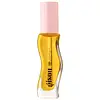What's inside
What's inside
 Key Ingredients
Key Ingredients

 Benefits
Benefits

 Concerns
Concerns

 Ingredients Side-by-side
Ingredients Side-by-side

Hydrogenated Polyisobutene
EmollientDiisostearyl Malate
EmollientButyrospermum Parkii Butter
Skin ConditioningPolybutene
Microcrystalline Wax
Emulsion StabilisingSynthetic Wax
AbrasiveOctyldodecanol
EmollientPolyglyceryl-2 Triisostearate
EmulsifyingHydrogenated Poly(C6-14 Olefin)
EmollientTocopherol
AntioxidantTocopheryl Acetate
AntioxidantTetrahexyldecyl Ascorbate
AntioxidantPalmitoyl Tripeptide-1
Skin ConditioningOrbignya Oleifera Seed Oil
EmollientTheobroma Grandiflorum Seed Butter
Skin ConditioningLactic Acid
BufferingTribehenin
EmollientStevioside
MaskingPhytosteryl/Isostearyl/Cetyl/Stearyl/Behenyl Dimer Dilinoleate
Skin ConditioningEthylhexyl Palmitate
EmollientSorbitan Isostearate
EmulsifyingSynthetic Fluorphlogopite
Disteardimonium Hectorite
StabilisingCI 77891
Cosmetic ColorantCI 45410
Cosmetic ColorantCI 15850
Cosmetic ColorantCI 19140
Cosmetic ColorantCI 42090
Cosmetic ColorantHydrogenated Polyisobutene, Diisostearyl Malate, Butyrospermum Parkii Butter, Polybutene, Microcrystalline Wax, Synthetic Wax, Octyldodecanol, Polyglyceryl-2 Triisostearate, Hydrogenated Poly(C6-14 Olefin), Tocopherol, Tocopheryl Acetate, Tetrahexyldecyl Ascorbate, Palmitoyl Tripeptide-1, Orbignya Oleifera Seed Oil, Theobroma Grandiflorum Seed Butter, Lactic Acid, Tribehenin, Stevioside, Phytosteryl/Isostearyl/Cetyl/Stearyl/Behenyl Dimer Dilinoleate, Ethylhexyl Palmitate, Sorbitan Isostearate, Synthetic Fluorphlogopite, Disteardimonium Hectorite, CI 77891, CI 45410, CI 15850, CI 19140, CI 42090
Polyglyceryl-2 Isostearate/Dimer Dilinoleate Copolymer
EmollientDilinoleic Acid/Propanediol Copolymer
EmollientVitis Vinifera Seed Oil
EmollientCarthamus Tinctorius Seed Oil
MaskingHelianthus Annuus Seed Oil
EmollientMauritia Flexuosa Fruit Oil
Skin ConditioningVaccinium Myrtillus Seed Oil
Skin ConditioningMel
EmollientOenothera Biennis Oil
EmollientRosa Canina Fruit Oil
EmollientTocopherol
AntioxidantEthylhexyl Palmitate
EmollientTrihydroxystearin
Skin ConditioningSodium Hyaluronate
HumectantGlucomannan
Skin ConditioningAroma
Calendula Officinalis Flower Extract
MaskingDaucus Carota Sativa Root Extract
Skin ConditioningCitrus Aurantium Bergamia Fruit Extract
Skin ConditioningPropolis Cera
AntiseborrhoeicCitronellol
PerfumingGeraniol
PerfumingLinalool
PerfumingLimonene
PerfumingCitral
PerfumingPolyglyceryl-2 Isostearate/Dimer Dilinoleate Copolymer, Dilinoleic Acid/Propanediol Copolymer, Vitis Vinifera Seed Oil, Carthamus Tinctorius Seed Oil, Helianthus Annuus Seed Oil, Mauritia Flexuosa Fruit Oil, Vaccinium Myrtillus Seed Oil, Mel, Oenothera Biennis Oil, Rosa Canina Fruit Oil, Tocopherol, Ethylhexyl Palmitate, Trihydroxystearin, Sodium Hyaluronate, Glucomannan, Aroma, Calendula Officinalis Flower Extract, Daucus Carota Sativa Root Extract, Citrus Aurantium Bergamia Fruit Extract, Propolis Cera, Citronellol, Geraniol, Linalool, Limonene, Citral
 Reviews
Reviews

Ingredients Explained
These ingredients are found in both products.
Ingredients higher up in an ingredient list are typically present in a larger amount.
Ethylhexyl Palmitate, also known as octyl palmitate, is created from 2-ethylhexyl alcohol and palmitic acid. It is a fatty acid ester.
The fatty acid content of Ethylhexyl Palmitate makes it an emollient. Emollients help soften and hydrate your skin by trapping moisture within.
Ethylhexyl Palmitate is also used to help improve the texture of cosmetics. It helps other ingredient dissolve in products and help disperse ingredients more evenly.
You'll likely find this ingredient in sunscreen, as it is often used to mix UV-blocking ingredients such as avobenzone and ethylhexyl triazone.
It can also help stabilize the fragrances in a product as a fragrance fixative.
Ethylhexyl Palmitate can be used to substitute mineral oil.
Due to its high fatty acid content, it may not be fungal-acne safe.
Learn more about Ethylhexyl PalmitateTocopherol (also known as Vitamin E) is a common antioxidant used to help protect the skin from free-radicals and strengthen the skin barrier. It's also fat soluble - this means our skin is great at absorbing it.
Vitamin E also helps keep your natural skin lipids healthy. Your lipid skin barrier naturally consists of lipids, ceramides, and fatty acids. Vitamin E offers extra protection for your skin’s lipid barrier, keeping your skin healthy and nourished.
Another benefit is a bit of UV protection. Vitamin E helps reduce the damage caused by UVB rays. (It should not replace your sunscreen). Combining it with Vitamin C can decrease sunburned cells and hyperpigmentation after UV exposure.
You might have noticed Vitamin E + C often paired together. This is because it is great at stabilizing Vitamin C. Using the two together helps increase the effectiveness of both ingredients.
There are often claims that Vitamin E can reduce/prevent scarring, but these claims haven't been confirmed by scientific research.
Learn more about Tocopherol